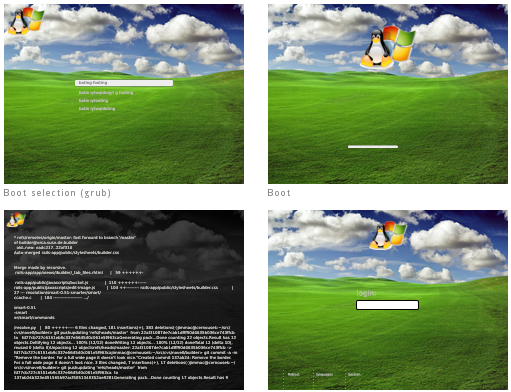
Proton Pump Inhibitor Mechanism Of Action Pdf Generator
Mechanism of Action: Esomeprazole is a proton pump inhibitor that suppresses gastric acid secretion by specific inhibition of the H+/K+-ATPase in the gastric parietal cell. The S- and R-isomers of omeprazole are protonated and converted in the acidic compartment of the parietal cell forming the active inhibitor, the achiral sulphenamide. Inhibition of this proton pump acts beyond the site of action of second messengers, e.g. Calcium ion and cyclic AMP, and is independent of the action of secretogogues histamine, gastrin, and acetylcholine. Thus, acid or proton pump inhibitors (PPIs) block basal and stimulated secretion.
The treatment of cancer presents a clinical challenge both in human and veterinary medicine. Chemotherapy protocols require the use of toxic drugs that are not always specific, do not selectively target cancerous cells thus resulting in many side effects. A recent therapeutic approach takes advantage of the altered acidity of the tumour microenvironment by using proton pump inhibitors (PPIs) to block the hydrogen transport out of the cell. The alteration of the extracellular pH kills tumour cells, reverses drug resistance, and reduces cancer metastasis.
Human clinical trials have prompted to consider this as a viable and safe option for the treatment of cancer in companion animals. Preliminary animal studies suggest that the same positive outcome could be achievable. The purpose of this review is to support investigations into the use of PPIs for cancer treatment cancer in companion animals by considering the evidence available in both human and veterinary medicine. In recent years the role of pH in cancer has received increasing attention from researchers worldwide. It is becoming clear that pH plays an important role in the survival mechanisms of mammalian cancer cells and that it is implicated in the resistance to drugs that some cancer types develop during chemotherapy [ ]. Over the last 40 years the number of human cancer deaths and new cases per year has generally remained static, but the survival times have been increasing gradually mainly due to improved screening methods, and earlier detection rather than advancements in treatment [ ].

Currently, the main reason for treatment failure is the development of drug resistance [ ], thus forcing scientists and clinicians to rethink the way cancer is treated. Historically, clinicians have used chemotherapy protocols to eradicate the growth of fast proliferating tumour cells.
FIFA 13 is the latest version of FIFA franchise. Today I would like to give you a utility that will assist you to customize you FIFA 13. It is called Fifa13 i68Regenerator 3.2 Ultimate. The tool is used to regenerate FIFA 13 indexes files, and it allows people to import any patches smoothly.  REGENERATOR – with which you. FIFA Futsal 13 155393 5. Creation Master 16 v.2.0 149876 6. FIFA Infinity Patch 18 (v.5.1) 94364 7. RTWC 2014 Expansion Patch 72800 8. 12/13 Winter Transfers Update 58522 9. 2013 Roster Update 55857 10. FIFA 14 HD Pitch Mod 48256; Ad.
REGENERATOR – with which you. FIFA Futsal 13 155393 5. Creation Master 16 v.2.0 149876 6. FIFA Infinity Patch 18 (v.5.1) 94364 7. RTWC 2014 Expansion Patch 72800 8. 12/13 Winter Transfers Update 58522 9. 2013 Roster Update 55857 10. FIFA 14 HD Pitch Mod 48256; Ad.
However, the dose levels required to overcome the developing resistance cause human patients discomfort which can reach unacceptable levels in the more advance stages of the disease, ultimately resulting in the treatment failing to keep the cancer under control. It is well known that cancer is not only a genetic disease, but a condition which results from clonal selection of metabolic changes conferring cancer cells a growth advantage [ ]. In this context, it has been demonstrated that extracellular pH plays an important role in drug resistance and malignant progression [ ]. Targeting tumour pH can be therefore considered a valid and novel therapeutic strategy [ ]. PH in cancer Conventional therapies aimed at targeting proliferating cancer cells often do not take in account cancer complexity and tumour heterogeneity. In recent years, scientists have studied cancer at the molecular level and investigated the phenotypic changes and markers in different types of cancer [ ]. One of the most important phenotypic changes is the cancer cell’s ability to change the extracellular acidity due to an altered glycolysis pathway [ ].
Nearly a century ago, Otto Warburg recognised the acidification of the tumour microenvironment [ ], postulating that cancer cells use the less efficient anaerobic glycolysis pathway even in the presence of oxygen, now known as the Warburg hypothesis. This alternative pathway results in an intracellular accumulation of lactic acid which would lead to cellular death if not removed.